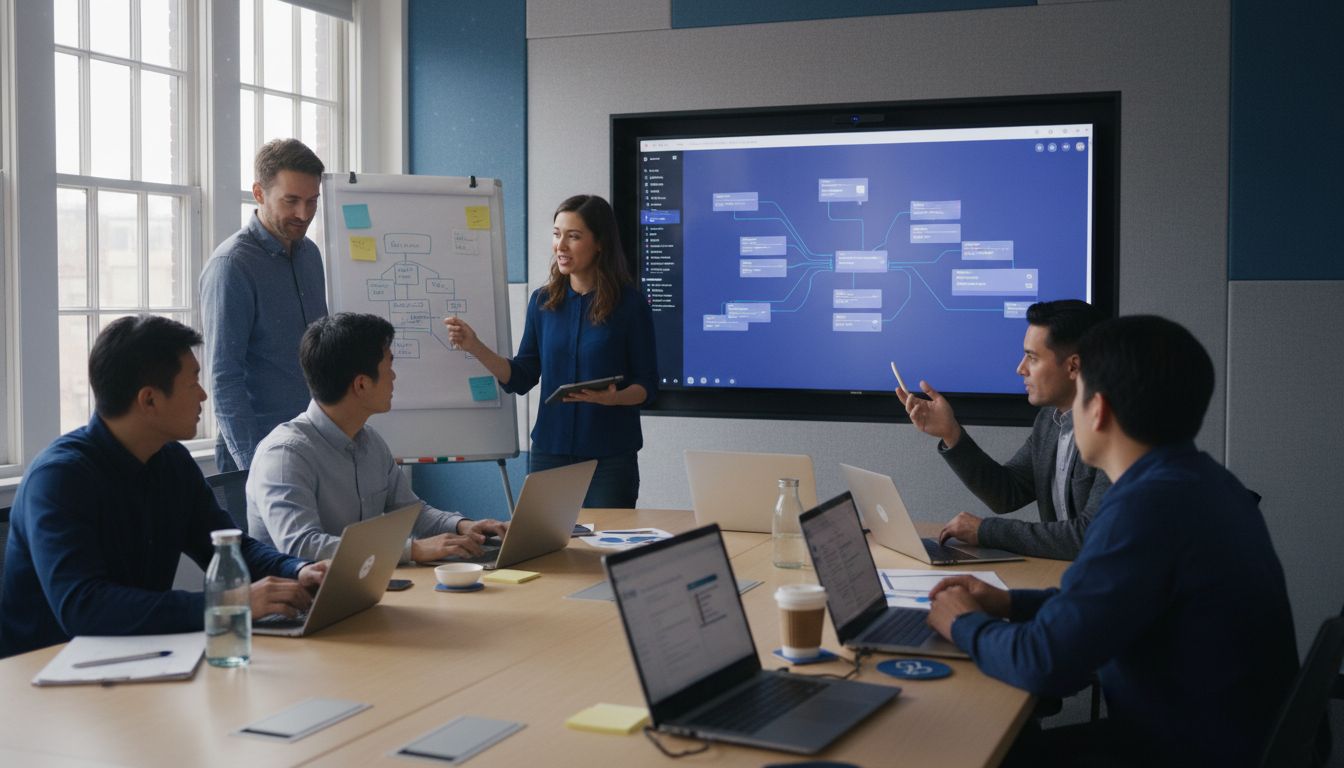By Singleclic — delivering integrated IT solutions since 2013 across the Arab world.
Skimmable Summary
We outline what scalability means, the core components of a modern IT stack, a practical five-stage roadmap to scale, and governance/security practices that keep growth safe and cost-effective. We also answer common questions and provide a checklist you can use today.
What Do We Mean by “Scalable”?
Scalability is the capability of your IT environment to handle increasing (or decreasing) workloads by adding resources—ideally automatically—without degrading performance, security, or economics. In practice, that means predictable performance during traffic spikes, modular architecture, and cost that grows linearly (or better) with usage.
Why Scalability Matters for Growth
- Performance under load: Keep user experience consistent during peaks, launches, and seasonal demand.
- Faster innovation: Modular, API-first systems let us add services without re-platforming.
- Cost control: Right-sized, autoscaled resources reduce overprovisioning.
- Resilience: Distributed designs minimize single points of failure.
- Compliance & security: Scaling policies embed guardrails from day one.
Looking for a strategy primer first? See our related guide: Tech-Driven Business Growth Strategies.
The 7 Core Components of a Scalable IT Infrastructure
- Compute Layer (VMs/Containers/Serverless)
Mix instance groups, Kubernetes, and serverless functions for elastic, event-driven workloads. - Networking & Edge
Load balancers, CDNs, WAF, DNS, and zero-trust access for secure, low-latency delivery. - Storage & Databases
Tiered object storage, block storage for stateful apps, and polyglot persistence (SQL/NoSQL/Analytics) with read replicas and partitioning. - Data & Integration Fabric
Message queues, event streams, ETL/ELT, and APIs to connect apps reliably at scale. - Observability & Reliability
Centralized logs, metrics, traces, SLOs, error budgets, incident response, and chaos testing. - Security & Compliance
IAM with least privilege, secrets management, encryption (at rest/in transit), SIEM/SOAR, and continuous compliance. - Automation & Platform Engineering
Infrastructure as Code, GitOps/CI-CD, golden images, and developer self-service portals.
The 5 Stages to Build for Scale (Practical Roadmap)
Stage 1 — Assess & Baseline
- Map critical user journeys and current bottlenecks.
- Define SLOs (e.g., p95 latency, uptime).
- Inventory tech debt and cost hotspots.
Stage 2 — Modularize & Containerize
- Break monoliths into domain-aligned services where it pays off.
- Introduce Kubernetes for predictable deployments and autoscaling.
- Externalize config and secrets; add service mesh if east-west traffic grows.
Stage 3 — Data Scaling Strategy
- Separate OLTP from analytics.
- Use read replicas, partitioning/sharding, and caches.
- Standardize an event bus/stream for real-time data sharing.
Stage 4 — Edge, Caching & Global Footprint
- Place CDN in front of static assets and APIs where feasible.
- Geo-replicate data with clear consistency rules.
- Add WAF & DDoS protection; adopt zero-trust for workforce and machine access.
Stage 5 — Automate Everything
- Infra as Code for all environments.
- Policy-as-code for guardrails (cost, security, compliance).
- SRE practices: error budgets, runbooks, post-mortems, and continuous reliability tests.
Reference Architecture (At a Glance)
- Frontend via CDN + WAF → API Gateway → Microservices on Kubernetes/Serverless
- Data: Managed SQL (primary + replicas), managed NoSQL for high-throughput, object storage for media/backups
- Integration: Message queue/stream + event bus
- Observability: Central log store, metrics, tracing, alerting
- Security: IAM, secrets vault, KMS, SIEM, vulnerability scanning
- Automation: GitHub/GitLab CI-CD, Terraform, GitOps
Cost-Optimized Scaling Tactics
- Right-size instances with autoscaling and scheduled scaling.
- Use spot/preemptible where safe.
- Tier storage (hot/warm/cold) with lifecycle policies.
- Cache aggressively (CDN + application cache).
- Tag/chargeback by team or product to drive accountability.
Governance, Risk & Compliance at Scale
- Enforce least privilege and rotate credentials automatically.
- Continuous vulnerability scanning and patch pipelines.
- Data residency and encryption standards by jurisdiction.
- Detailed audit trails; quarterly disaster-recovery drills.
Implementation Checklist
- SLOs & capacity plan agreed with business
- IaC repo (modules, environments, pipelines)
- Kubernetes or serverless baseline with autoscaling
- CDN, WAF, global DNS, and caching in place
- Database read replicas + partitioning strategy
- Centralized logging/metrics/tracing + alert runbooks
- IAM policies & secrets vault; keys rotated
- Cost dashboards and forecast alerts
- DR/BCP tested; RPO/RTO documented
People Also Ask — Expert Answers (FAQ)
What is scalability in IT infrastructure?
Scalability is the ability of systems to increase or decrease capacity—compute, storage, and throughput—without losing performance, security, or cost efficiency. Practically, it means we can add resources (or turn them off) automatically as demand changes.
What are the 7 components of IT infrastructure?
Compute, networking/edge, storage & databases, data/integration fabric, observability/reliability, security/compliance, and automation/platform engineering. Together they provide elasticity, visibility, and safe operations at scale.
What are the 5 stages of IT infrastructure?
Assess & baseline → modularize & containerize → scale data → expand edge & global footprint → automate everything with IaC, CI-CD, and SRE governance.
What does it mean to scale infrastructure?
It means designing and operating your stack so capacity can grow predictably—through horizontal scaling, managed services, and automation—while keeping latency low, uptime high, and costs under control.
Why Partner with Singleclic
Since 2013, we’ve helped organizations across the region modernize and scale using Low-Code, ERP, CRM, Cloud-Native hosting, networking, and cybersecurity—backed by 24/7 support. We deliver end-to-end implementations, from discovery to managed services.
- Sectors served: public & private across the Arab world
- Hosting & Cloud-Native: secure, compliant, and cost-aware
- Managed Services: proactive monitoring and rapid incident response
Call to Action
Let’s architect a scalable platform that grows with your business.
Contact us: +2 010 259 99225 / +971 42 475421 / +966 58 1106563
Website: https://singleclic.com/









